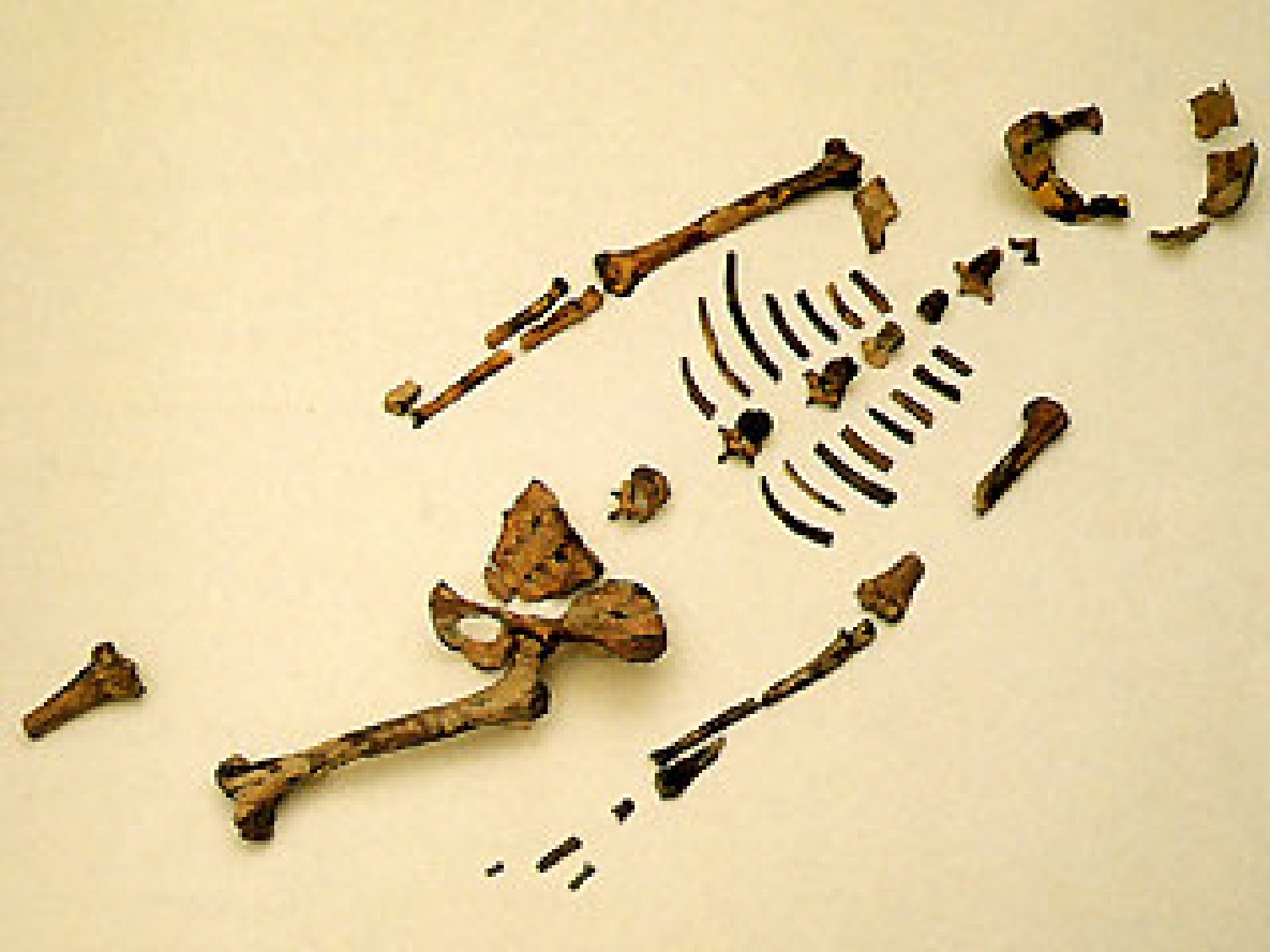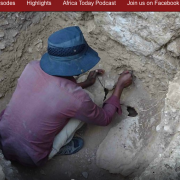“There is one small tooth mark on Lucy’s pelvis that was obvious from the beginning,” says Johanson, “but there were no carnivore marks on the rest of the skeleton.”
But in 2008, Kappelman and his team were able to get their hands on the rock star fossil while she was on tour at museums in the United States. They conducted CT scans of each of the bones, and, in a protracted process that lasted the next eight years, his team meticulously analyzed the 35,000 digital slices the scans generated.
“It was looking at those scans and the way that her skeleton was built that these unusual fractures came to light,” says Kappelman.
According to Kappelman, while bones break naturally over time postmortem, they usually fracture across the bone—analogous to a dry stick being snapped in half. A closer examination of Lucy, however, revealed fractures that he claims are far more common in living bone.
For example, the researchers observed hinge, or greenstick, fractures, in which one side of the bone breaks while the other remains intact; similar to what happens when you try to snap a small healthy tree branch.
The scientists also noticed that tiny bone fragments that splintered during the fracture remained lodged in the bone cracks.
This finding, Kappelman argues, provides additional evidence that the fractures took place in living tissue, since breaks in dried bone likely would have dispersed these tiny fragments on the ground nearby.
And because these fractures showed no signs of healing, the team concluded that Lucy sustained these injuries in a fatal traumatic event.
Up On High
Additional evidence points to a scenario of a terrifying fall.
Notably, her right shoulder has distinctive compression fractures that are characteristic of someone extending their arms as they plummet to the ground.
“I showed the evidence to an orthopedic surgeon, who immediately said it is a fracture caused by a fall from considerable height—there was no question at all,” says Kappelman. “I have now had nine surgeons look at this who all agree.”
Kappelman and his team then scrupulously examined fractures in the rest of Lucy’s skeleton, creating 3-D models to digitally dissect or recreate certain components. Their analysis revealed a cohesive pattern in her ankle, knee, shoulders, and wrist that they are convinced points to a fall from a significant height that would provide the force necessary to break her bones.
Based on studies of fossilized mammals and pollen, as well as geology in Lucy’s environs, the researchers knew that the area probably had been grass-covered woodland on a flat floodplain with plenty of large trees capable of facilitating the fateful accident.
Kappelman and his colleagues speculated that small hominins like Lucy, who stood a mere one meter (three and a half feet) tall and weighed around 27 kilograms (60 pounds), likely nested in the trees at night to protect themselves from potential predators.
By analyzing previous studies of chimpanzee nesting patterns, the team showed that Lucy would probably have climbed around 14 meters (45 feet) out of harm’s way—which, for us, would be equivalent to ascending a four to five story building. According to their calculations, a fall from this height could result in speeds exceeding 37 miles (60 kilometers) an hour, which, when combined with Lucy’s weight, would produce a force sufficient enough to be fatal.
The researchers have “come up with what strikes me as the most plausible explanation for the breakage—mainly a fall from considerable height onto a very solid surface,” says David Pilbeam, a paleoanthropologist at Harvard University who advised Kappelman on his dissertation 30 years ago.
Not everyone, however, is convinced that the evidence points to this scenario. In particular, some scientists fault Kappelman for failing to consider other possible explanations.
“These authors make no effort to test the alternative hypothesis that these cracks and other breaks were made during the processes of fossilization and erosion,” says Timothy White, a paleoanthropologist and professor of Integrative Biology at the University of California, Berkeley. “In fact, the authors appear to have focused only on the cracks that they could attribute to an imagined fall, ignoring the additional abundant cracks on Lucy and other fossils.”
Johanson is likewise skeptical. “My reticence about the [study] is that in some ways it is a narrative, a just-so story,” he says. “Something that you can’t verify and you can’t falsify and is therefore unprovable.”
Ape and Human Features
If Kappelman’s research were to become widely accepted, the findings could help settle a long-standing debate: Were hominins like Lucy tree climbers?
Australopithecus afarensis displays both ape and human features, leading some paleoanthropologists to believe that Lucy probably spent time both in the trees and on the ground.
For example, her curved fingers and long arms are specialized for tree climbing while her shoulder blades are oriented for overhead movement of the arms that are reminiscent of apes. Yet she also displays several features seen in early humans, including an anatomy clearly suited for upright walking, leading other researchers to conclude that she spent all of her time on the ground.
Lucy’s theoretical fall could indicate that her species wasn’t suited to climb trees or that she was, at least, semiarboreal.
“It doesn’t strike me as particularly surprising that Australopithecus was using trees even if they weren’t optimally designed to do so, nor is it very surprising that they occasionally fell out of them,” says Pilbeam. “Chimps fall out of trees, gibbons fall out of trees. The notion that apes and monkeys are perfectly adapted to life in the trees is not correct.”
“I think that there is some evolutionary baggage left over from arboreal life and that we are catching a species in transition,” says Johanson. “I wouldn’t think it’s impossible that they went into the trees to collect fruit or maybe even to build nests to sleep at night, but in terms of their primary mode of locomotion, these guys were essentially terrestrial.”
For his part, Kappelman will continue to analyze other aspects of Lucy’s skeleton and may even look for her fracture pattern in different fossils found in the area. In the meantime, he says, the research has made him see Lucy in a new way.
“At one point, I had all these bones out and this idea just finally crystalized—I could see the fall, the position of her body when she hit, the impact,” says Kappelman. “For the very first time, I saw her as an individual and this wave of empathy hit me. For the first time she was not just an isolated box of broken bones. I could actually picture how she died.”

















